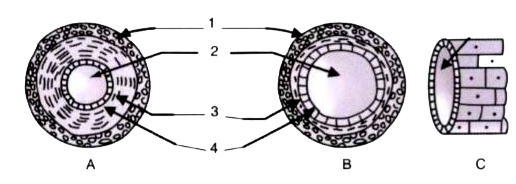Describe the functions of the Blood vessels
Step-by-Step Solution:
1. Introduction to Blood Vessels:
- Blood vessels are tubes in the body that carry blood to all parts of the body. They play a crucial role in the circulatory system.
2. Types of Blood Vessels:
- There are three main types of blood vessels: arteries, veins, and capillaries.
3. Function of Arteries:
- Arteries are blood vessels that carry blood away from the heart.
- They transport oxygenated blood, which is rich in oxygen and low in carbon dioxide, to various tissues and organs in the body.
4. Function of Veins:
- Veins are blood vessels that carry blood towards the heart.
- They collect deoxygenated blood, which is rich in carbon dioxide and low in oxygen, from the body and return it to the heart.
5. Function of Capillaries:
- Capillaries are the smallest blood vessels and are responsible for the exchange of materials.
- They facilitate the exchange of oxygen, carbon dioxide, nutrients, and waste products between the blood and the tissues.
6. Summary of Functions:
- In summary, arteries carry oxygenated blood away from the heart, veins bring deoxygenated blood back to the heart, and capillaries allow for the exchange of materials between blood and tissues.
- Blood vessels are tubes in the body that carry blood to all parts of the body. They play a crucial role in the circulatory system.
- There are three main types of blood vessels: arteries, veins, and capillaries.
- Arteries are blood vessels that carry blood away from the heart.
- They transport oxygenated blood, which is rich in oxygen and low in carbon dioxide, to various tissues and organs in the body.
- Veins are blood vessels that carry blood towards the heart.
- They collect deoxygenated blood, which is rich in carbon dioxide and low in oxygen, from the body and return it to the heart.
- Capillaries are the smallest blood vessels and are responsible for the exchange of materials.
- They facilitate the exchange of oxygen, carbon dioxide, nutrients, and waste products between the blood and the tissues.
- In summary, arteries carry oxygenated blood away from the heart, veins bring deoxygenated blood back to the heart, and capillaries allow for the exchange of materials between blood and tissues.
Topper's Solved these Questions
- CIRCULATORY SYSTERBOOK - ICSECHAPTER - CIRCULATORY SYSTEREXERCISE - TEST YOURSELF (DEFINE)
4 Videos
- CIRCULATORY SYSTERBOOK - ICSECHAPTER - CIRCULATORY SYSTEREXERCISE - TEST YOURSELF (ANSWER THE QUESTIONS)
13 Videos
- CIRCULATORY SYSTERBOOK - ICSECHAPTER - CIRCULATORY SYSTEREXERCISE - TEST YOURSELF (FILL IN THE BLANKS)
5 Videos
- CIRCULATORY SYSTEM IN HUMANS BOOK - ICSECHAPTER - CIRCULATORY SYSTEM IN HUMANS EXERCISE - Check your progress (true or false.)
4 Videos
- DIGESTIVE SYSTEMBOOK - ICSECHAPTER - DIGESTIVE SYSTEMEXERCISE - REVIEW QUESITONS (LONG ANSWER QUESTIONS)
12 Videos
Similar Questions
Describe the functions of the Red blood cells
View SolutionDescribe the functions of the White blood cells
View SolutionMention the functions of the following:
Blood vessels
View SolutionWhat is the functions of dorsal blood vessel in pheretima-
View SolutionThe function of vessels is
View SolutionThe finest of all blood vessels are the
View SolutionWhich one of the followings plants is monoecious?
View SolutionThe following simplified diagram refers to the outline plan of the circulation of blood in a mammal, Study the diagram and write the number and the name of the blood vessel in each case as mentioned under.

in which vessel will the blood carry the most oxyhaemoglobin
View SolutionThe figures given below are cross-sections of blood vessels

Which category of blood vessels have valves in their inner lining?
View SolutionThe figures given below are crose-coctions of blood vessels

Identity the blood vessels A B and C.
View Solution
